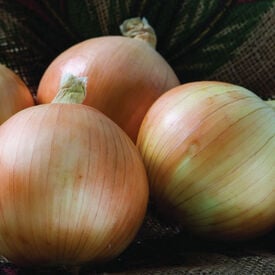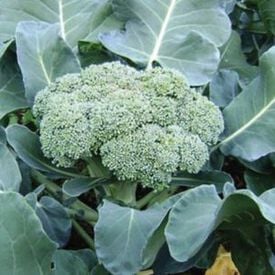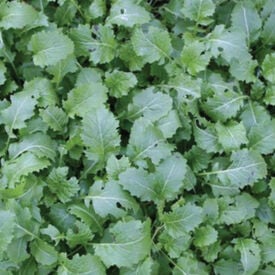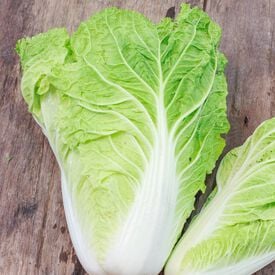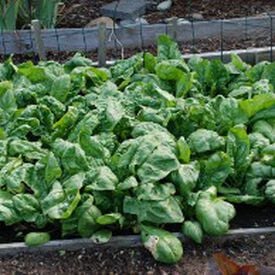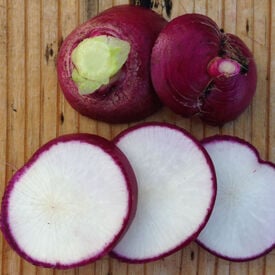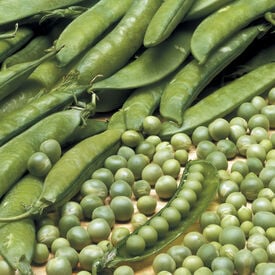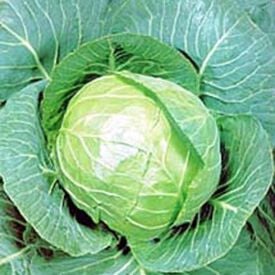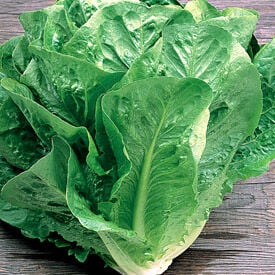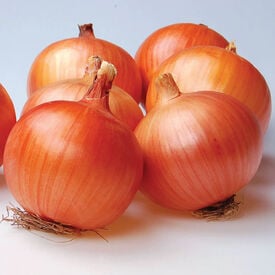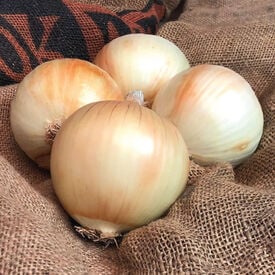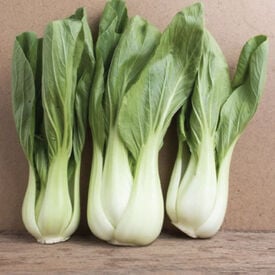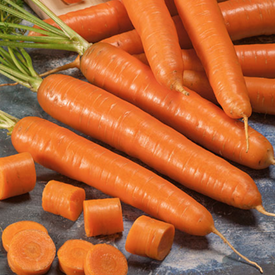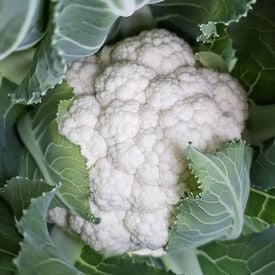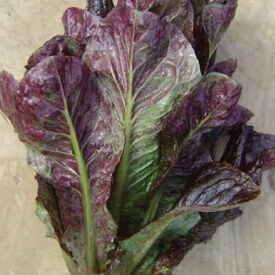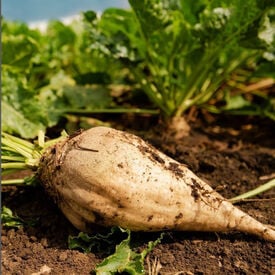Scout is an early to main season intermediate variety and can make a good transition from intermediate to long days. It is a consistent yielder and a uniform producer of jumbo and colossal bulbs and holds up well to mechanical harvest.
Calabrese Green Sprouting broccoli is a popular and nutritious vegetable known for its tender florets and robust flavor. Originating from Italy, specifically the Calabria region, this variety was cultivated for centuries before gaining popularity worldwide, especially in home gardens and markets. Calabrese broccoli include its sturdy, upright stalks and large, vibrant green heads that typically form in loose clusters. The color is a rich, dark green, with tightly packed florets that can range from small to medium-sized. When cooked, Calabrese broccoli offers a slightly sweet and earthy flavor, making it a versatile ingredient in a variety of dishes, from stir-fries to soups. An appealing attribute of Calabrese is its ability to produce side shoots after the main head is harvested, providing multiple harvests throughout the season. This variety is also valued for its nutritional benefits, being rich in vitamins C and K, fiber, and antioxidants. Its hardiness and adaptability make Calabrese green sprouting broccoli a favorite among gardeners and cooks alike.
Dwarf Essex Rape (Brassica napus) is a fast-growing, cold-hardy forage crop commonly used for livestock grazing, wildlife food plots, and soil improvement. This leafy brassica produces high-protein, highly digestible forage that remains palatable even in colder temperatures, making it an excellent choice for fall and winter grazing. It is drought-resistant and can thrive in various soil types, providing a nutritious food source for deer, cattle, and other grazing animals. Additionally, its deep root system helps improve soil structure and reduce erosion. Due to its rapid regrowth, Dwarf Essex Rape is a valuable option for sustainable pasture management.
Michihili cabbage is great for those who love stir-fry or pickling cabbage. A tight-head type with well blanched, crisp and tender interior. Michihili produces a cylindrical, leafy head. A high yielding cabbage with excellent flavor. Chinese cabbage nutrients include vitamins A and C.
The Olympia is a top-notch smooth leaf hybrid spinach that has a great flavor. This spinach Hybrid has thick and dark green leaves that grow upright. The Olympia is highly recommended for spring, summer, fall and over wintering crops because it resists bolting under high temperatures and long day conditions. Treated seed.
The Purple Plum is an amazing purple skinned radish with a crisp, mild and sweet white flesh! This unique radish is different from the "typical" radish coloring. This small round shaped radish is early to harvest, which makes it great for home and market growers. Purple Plum is a nice variety to blend with other colors in mixes!
The Lincoln Pea is an extra tender variety with a sweet flavor and high yields. This pea variety was introduced just after World War II during the peace time. Lincoln quickly became a popular home garden variety due to its versatility, as it can be eaten fresh, froze or canned. Its pods can reach 4-5" in length and are full of 6-9 sweet, tender peas. Lincoln does well in heat and should have a small pea fence or some sort of support or its vines.
The Golden Acre is a tasty cabbage that arrives early and is suited for close spacing. This early round head cabbage is easily grown and versatile in use. Heads are about 6 to 7 inches in diameter on compact plants about a foot high. Its firm, medium green head is excellent cooked or raw in stews and salads.
Little Gem lettuce is a small, compact variety that belongs to the Romaine family. Known for its tender, crisp leaves and sweet, mild flavor, it has become a favorite in both casual and fine dining. The heads are typically about the size of a fist, with tightly packed, bright green leaves that are both crunchy and delicate. Its flavor is a perfect balance between the slightly bitter taste of Romaine and the mild sweetness of Butterhead lettuce. Little Gem is often used in salads, sandwiches, or as a base for grilling, where its natural sweetness intensifies. Its small size also makes it an ideal choice for individual servings or garnishes. Rich in vitamins A, C, and K, it’s not only flavorful but also nutritious. Little Gem's heads are about 4 inches across and are prime eating from 4-6 inches tall. The plants can be spaced 6 1/2 by 6 1/2 inches for maximum yields. Growing Little Gem lettuce is relatively easy and well-suited to home gardeners, thriving in cool, temperate climates. This compact variety of lettuce prefers full sun but can tolerate partial shade, especially in hotter weather. It grows best in well-drained, fertile soil with a slightly acidic to neutral pH. To plant, sow seeds directly into the soil in early spring or late summer, spacing them about 6-8 inches apart to allow for proper air circulation and growth. Little Gem lettuce thrives with regular watering, but it’s important to avoid waterlogging, as this can lead to root rot. As it matures, the small heads form tight, crisp rosettes. Harvesting can begin in around 30-45 days, typically when the heads are firm but still small. For continuous harvest, sow new seeds every couple of weeks. Little Gem lettuce is also ideal for container gardening due to its compact size, making it a great choice for small spaces or urban gardens.
The Green Towers Lettuce is an easy to grow, tasty green leaf lettuce. This lettuce variety offers a mild flavor with an attractive semi-savoyed texture. The Green Towers is a favorite for its adaptability and dense habit! This lettuce will grow great in any climate!
Caliber is a late-season yellow long day for the western United States known for vigor, disease resistance, yield, and storage capabilities. Caliber is a Celebrate hybrid with a healthy plant with solid roots and strong and erect tops that assist in providing thrips tolerance and make applications easier. Caliber has a consistent rich bronze scale in super colossal bulbs with single centers that do very well with a mechanical harvest. Caliber has a reputation for storing very well long term. Disease Ratings: HT to Pink Root and Fusarium, T to Bolting and HT for Thrips
c It also has the Celebrate plant structure to give it an extra boost against stress and make it grower friendly. These qualities help to make it a good fit for a short day program. Disease Ratings: High Tolerance to Pink Root, Fusarium, and Bolting.
White Stem Pak Choi, also known as Bok Choy or Pak Choi, is a versatile and popular Asian cabbage variety with origins in China. This leafy green vegetable has been cultivated for centuries, appreciated for its tender leaves and crisp, white stems. Characterized by its vibrant green, broad leaves and smooth, white stalks, White Stem Pak Choi is both visually appealing and nutritious. The flavor is mild and slightly sweet, making it a popular choice in stir-fries, soups, and salads. Harvesting typically occurs 45-60 days after planting, when the plants reach a height of about 12-18 inches, and can be done by cutting the entire plant or picking individual leaves. White Stem Pak Choi thrives in cooler weather, preferring well-drained soil and full sun, making it suitable for spring and fall planting. Its rapid growth and ability to produce multiple harvests, combined with its rich content of vitamins A, C, and K, make it a favorite among gardeners and cooks alike. Overall, White Stem Pak Choi is valued for its crisp texture, mild flavor, and adaptability in a variety of dishes.
The Bambino carrot is a super sweet baby gourmet carrot. The color develops quickly and can pull early. This carrot produces 4 in. cylindrical blunt roots, very small core, smooth skin, a deep orange color and small dwarf tops. The Bambino was developed for canning & pickling whole and must be harvested early.
Snowball Y Improved cauliflower is a popular open pollinated variety! This cauliflower is known for its vigorous, rapid growth and long harvest. Its head is snow-white and measures 7-8" inches across. Give this cauliflower fertile soil, full sun and steady moisture and you'll be rewarded with large, delicious heads that are high in vitamin C.
Little Finger carrot seeds grow into a petite, gourmet variety that originated in France and has been cherished since the mid-20th century for its tender, sweet flavor and snackable size. This Nantes-type carrot matures quickly in just 55–65 days, producing smooth, cylindrical roots about 3–4 inches long, making it perfect for small gardens and container growing. Its bright orange flesh is crisp, juicy, and sugary, often eaten fresh right from the garden, but also excellent for steaming, roasting, or pickling. Known as a child-friendly carrot because of its size and sweetness, Little Finger is ideal for fresh snacking, lunchboxes, and gourmet dishes, while also storing well for extended use.
Red Romaine Lettuce has long, crinkled leaves with great crunch! This variety starts green and fades to redish-purple. The Red Romaine's leaves are12" tall and the plant is about 10-12" wide. This lettuce is often used in Caesar salads not only for its crunch, but also for its color. Use Red Romaine lettuce for an incredible edible purple border in your flower beds.
Sugar beets are the perfect natural choice to make sugar! You can boil the sugar beets in order to make a sugary syrup. These beets can grow up to 1 foot long and can weigh from 3-5 pounds. That means you need to thin them to make sure they have enough room to grow. Tops can grow 1-2' tall. Beet tops can be eaten, lightly grazed or fed to animals.
